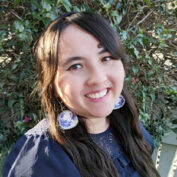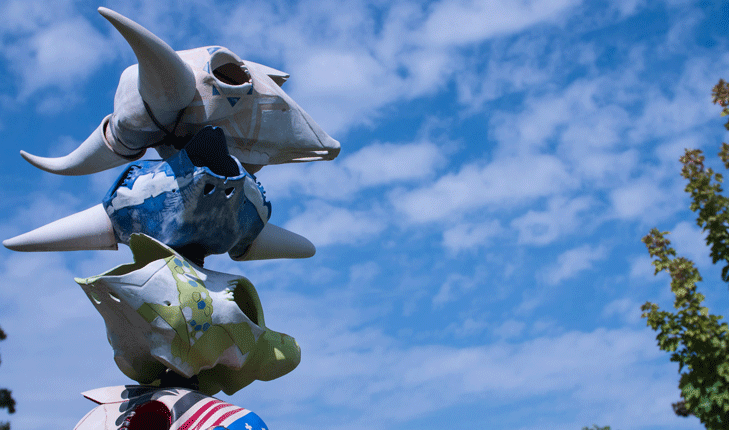
Marie Casao
Determined to improve the way K-12 students are educated about the histories of Indigenous peoples, Fresno State alumna Marie Casao (Narragansett Tribe of Rhode Island) has developed new resources for California teachers.
She curated a curriculum for educators who aim to teach about American Indian tribes and their relationships with ecosystems. This list of educational resources is directly tied to the intellectual knowledge of tribal peoples and their environments.
Casao, who completed Fresno State’s curriculum and instruction graduate program and earned a certificate in educational technology, is a Central Valley native and grew up in Lindsay, 60 miles south of Fresno.
While working as a teacher at a Valley elementary school, Casao said she felt unnerved when she saw first-hand how teachers referenced Indigenous peoples in the past tense and had students dress up as an “Indian” for a day. “We don’t teach about what it is to be Native in a modern society,” Casao said.
After enrolling in the Master of Arts in Education option in curriculum and instruction at Fresno State, Casao met Dr. Leece Lee-Oliver (Blackfeet/Choctaw/Wyandot/Cherokee), director of the American Indian Studies program and assistant professor at Fresno State.
Lee-Oliver assisted Casao with opportunities such as building a virtual learning science curriculum with the Fresno American Indian Health Project. Casao also collaborated with Fresno State’s California Indian Conference, a digital exhibit that celebrates the perseverance and vibrancy of California American Indian cultures.
“Students should be aware of their local history,” Casao said. “This exhibit offers a way for teachers to explore with their students and acknowledge the land they live on.”
According to the National Congress of American Indians, 87% of state history standards do not mention Native American history after 1900. Thus, creating an inaccurate representation of the many tribes, communities, and individuals that are current and active across the nation.
“In the first grade, I remember dressing up as an ‘Indian’ with my little construction paper headdress and all the kids sat down at a long table in the classroom and celebrated what the teacher said was the first Thanksgiving,” said Dr. Wild Garnett (Lemhi Shoshone), assistant professor of special education at Fresno State.
“Most of what was taught about American Indians in school is purely from a European perspective. It is a perspective that ignores our spiritual existence and connection to all things. It ignores our stories, our practices, our connection to the earth and all the living beings upon it, and ignores how we create and share knowledge.”
As of 2018, only 0.41% of professors in higher education are of American Indian or Alaska Native descent — one of the most underrepresented groups in higher education. Fresno State is home to nine American Indian faculty members, making up 0.60% of the faculty at the University.
As Casao reflects on her time at Fresno State, her heart warms as she remembers the ample support of her faculty. Before enrolling in her master’s program, she met with Dr. Carol Fry Bohlin, Curriculum and Instruction Department chair, and was supported in her desire to infuse Native American Studies into her education.
She also took classes with Dr. Roy Bohlin, professor emeritus, and appreciated his accommodations to customize final projects on her interests in topics such as Native youth and science, technology, engineering, arts and mathematics (STEAM) education.
“Because of all of the support from my professors, I have been able to learn how to become a better researcher, improve my writing skills, learn new teaching strategies, learn new methodologies, technology resources and much more,” Casao said.
After graduating in spring 2021, Casao began working as a program officer for the American Indian Science and Engineering Society. She works with pre-college programs and builds curricula to provide schools and teachers across the nation with STEAM resources. “Connecting with people who have very similar missions as me and interacting with Indigenous students is a highlight of this work,” Casao said.
Because of efforts such as Casao’s, teachers across the country are steadily gaining access to more resources on Indigenous education. In 2018, the Smithsonian National Museum of the American Indian launched Native Knowledge 360o, an initiative aiming to improve how Native American history and culture are taught in schools.
Initiatives such as these, in addition to local efforts, are helping teachers incorporate current Native histories into the classroom – working to increase the inclusivity of Indigenous cultures in education.





